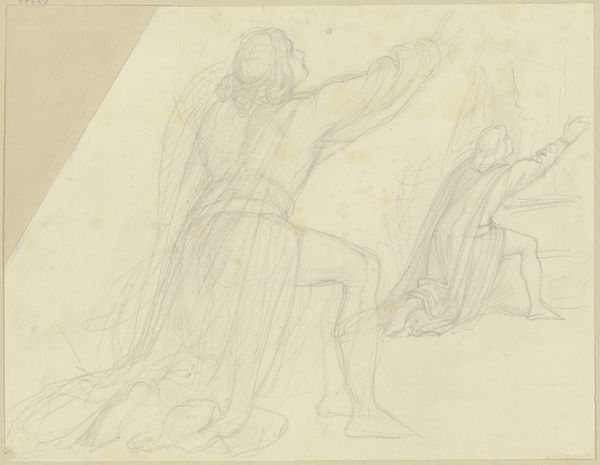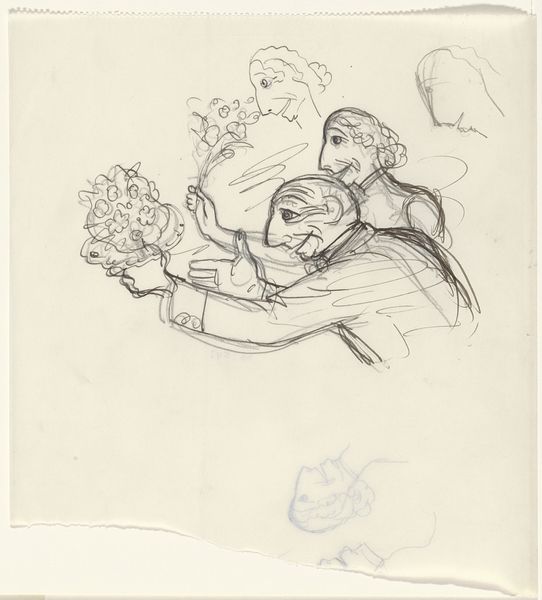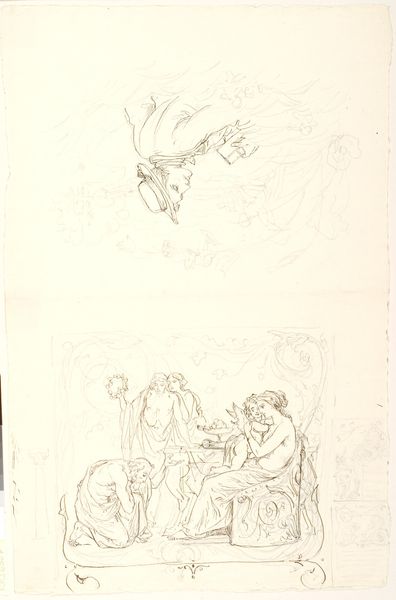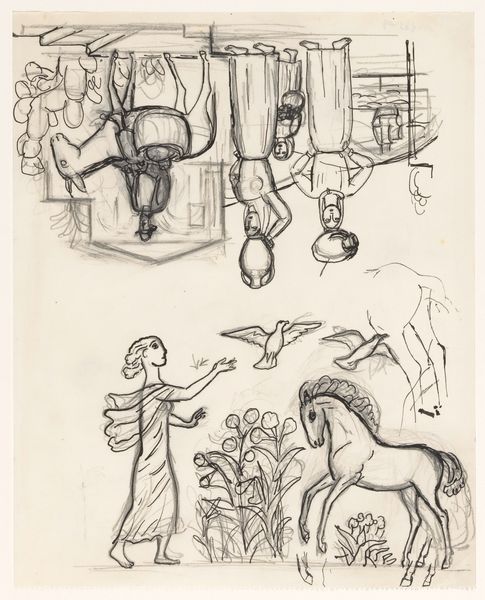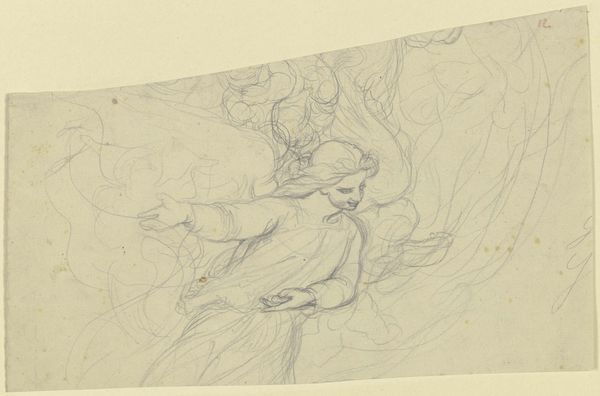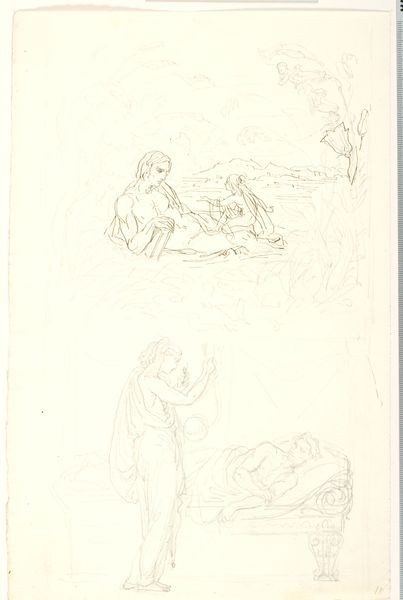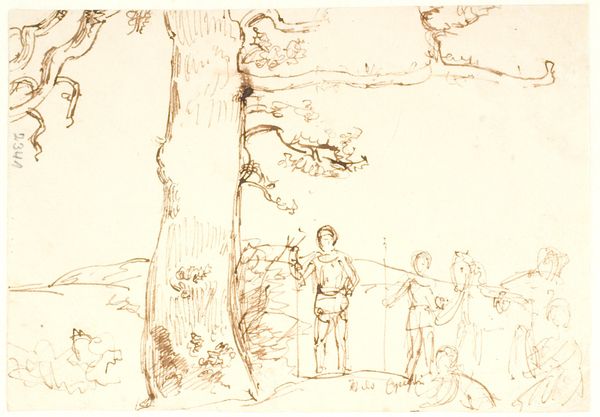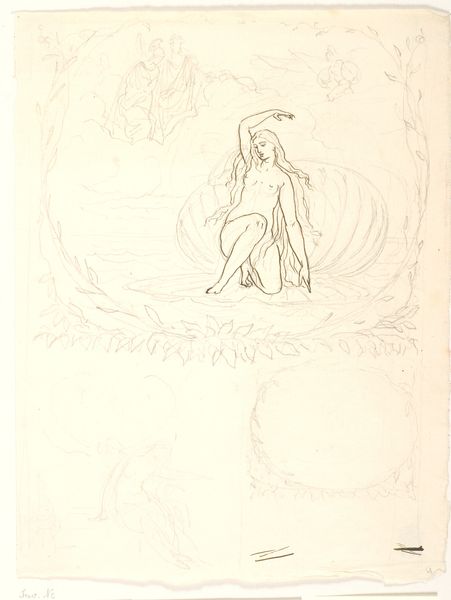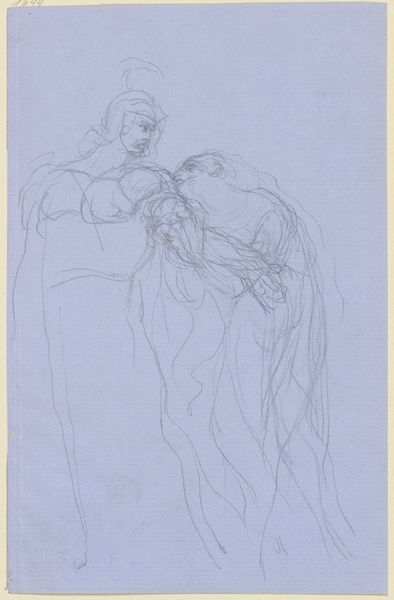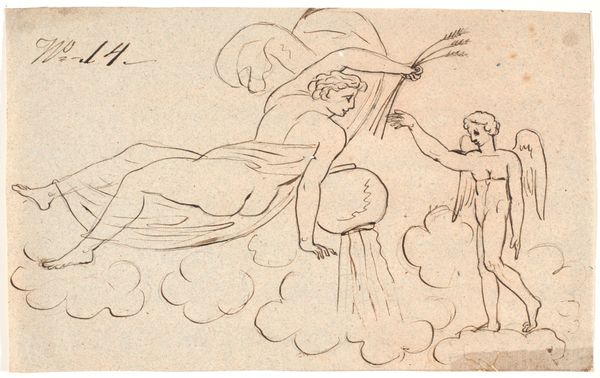
drawing, paper, pencil
#
portrait
#
drawing
#
comic strip sketch
#
imaginative character sketch
#
landscape
#
bird
#
figuration
#
paper
#
personal sketchbook
#
idea generation sketch
#
sketchwork
#
ink drawing experimentation
#
pencil
#
horse
#
sketchbook drawing
#
storyboard and sketchbook work
#
fantasy sketch
#
initial sketch
Dimensions: height 165 mm, width 260 mm
Copyright: Rijks Museum: Open Domain
Editor: This drawing, "Twee vrouwen, vogels en een paard" by Leo Gestel, made sometime between 1891 and 1941, features pencil and ink on paper. It feels almost like a preliminary sketch for something much larger. What can you tell me about it? Curator: What strikes me is the evident labor, visible in the multitude of pencil strokes. The layering of marks, the erased lines—these all speak to the artistic process as a physical activity. Considering the socio-economic context, what do these choices tell us about Gestel’s access to materials? Was paper readily available, or was its scarcity a factor in this sketch-like approach? Editor: That's interesting, I hadn't thought about the availability of materials affecting the style. Curator: Precisely. Also, notice the recurring themes: women, nature, animals. This wasn't ‘high art’ intending for traditional patronage. Instead, was it a deeply personal investigation for the artist, maybe reflecting a broader social preoccupation with the natural world, particularly during times of increasing industrialization? Was Gestel making a deliberate shift away from capitalist artistic production? Editor: So you are thinking this was more personal work, using readily available materials at hand? Curator: Exactly. And by focusing on such 'ordinary' materials, we're pushed to examine the very systems that determine what’s valued as "art" versus "craft" or "sketch." Gestel seemingly blurs these categories by embracing the directness of a preliminary study, right? What boundaries is the artist questioning by choosing *this* approach and these figures? Editor: I guess by valuing process, this elevates what is visible. It encourages us to rethink those traditional categories, valuing this act of creation just as much as something finished. Curator: Precisely. Thinking about production methods forces a re-evaluation, isn't it? What begins as a seemingly simple sketch prompts an entire line of questions relating to how we think of value and artistic practice! Editor: I’ll definitely be looking at art through the lens of process a little differently from now on!
Comments
No comments
Be the first to comment and join the conversation on the ultimate creative platform.
